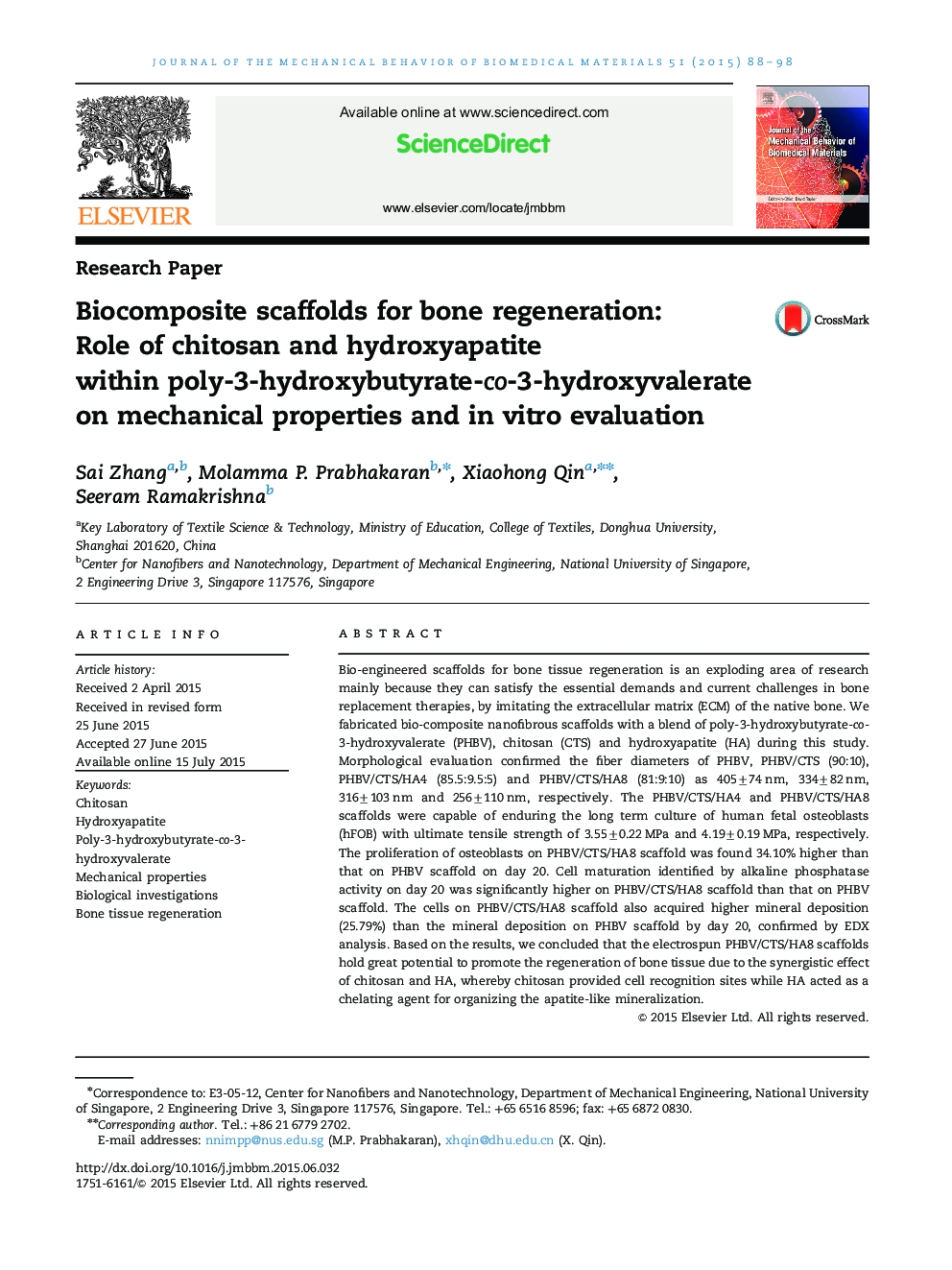| کد مقاله | کد نشریه | سال انتشار | مقاله انگلیسی | نسخه تمام متن |
|---|---|---|---|---|
| 810548 | 1469094 | 2015 | 11 صفحه PDF | دانلود رایگان |

Bio-engineered scaffolds for bone tissue regeneration is an exploding area of research mainly because they can satisfy the essential demands and current challenges in bone replacement therapies, by imitating the extracellular matrix (ECM) of the native bone. We fabricated bio-composite nanofibrous scaffolds with a blend of poly-3-hydroxybutyrate-co-3-hydroxyvalerate (PHBV), chitosan (CTS) and hydroxyapatite (HA) during this study. Morphological evaluation confirmed the fiber diameters of PHBV, PHBV/CTS (90:10), PHBV/CTS/HA4 (85.5:9.5:5) and PHBV/CTS/HA8 (81:9:10) as 405±74 nm, 334±82 nm, 316±103 nm and 256±110 nm, respectively. The PHBV/CTS/HA4 and PHBV/CTS/HA8 scaffolds were capable of enduring the long term culture of human fetal osteoblasts (hFOB) with ultimate tensile strength of 3.55±0.22 MPa and 4.19±0.19 MPa, respectively. The proliferation of osteoblasts on PHBV/CTS/HA8 scaffold was found 34.10% higher than that on PHBV scaffold on day 20. Cell maturation identified by alkaline phosphatase activity on day 20 was significantly higher on PHBV/CTS/HA8 scaffold than that on PHBV scaffold. The cells on PHBV/CTS/HA8 scaffold also acquired higher mineral deposition (25.79%) than the mineral deposition on PHBV scaffold by day 20, confirmed by EDX analysis. Based on the results, we concluded that the electrospun PHBV/CTS/HA8 scaffolds hold great potential to promote the regeneration of bone tissue due to the synergistic effect of chitosan and HA, whereby chitosan provided cell recognition sites while HA acted as a chelating agent for organizing the apatite-like mineralization.
Journal: Journal of the Mechanical Behavior of Biomedical Materials - Volume 51, November 2015, Pages 88–98